HOME Our Business S-Mark Types and Procedures Guide for Technical Documents
Clearly mark the product and model names on a standard binder (Height 7Cm, 2 Holes) which can file A4 (230×297mm) papers in loose-leaf edition. Please prepare the contents only on the open space only, and reduce the size to A4 if the size of drawing is A3, if this is impossible, fold it to a4 size to file it.
| No. | Name | Drawing No. | Volume | Remarks |
|---|---|---|---|---|
| 1 | Overall Assembly Drawing | KOSHA-01 | 1 | |
| 2 | Appearance Assembly Drawing | KOSHA-001 | 1 | |
| 3 | UP/DOWN UNIT | KOSHA-002 | 1 | |
| 4 | AUTO DAMPER UNIT | KOSHA-0001 | 2 | |
| 5 |
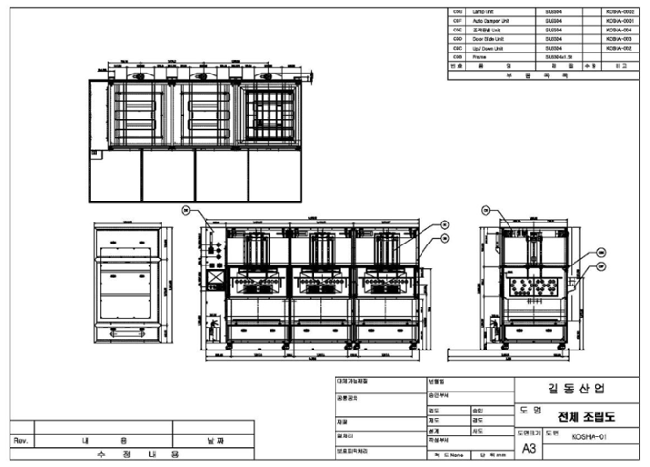
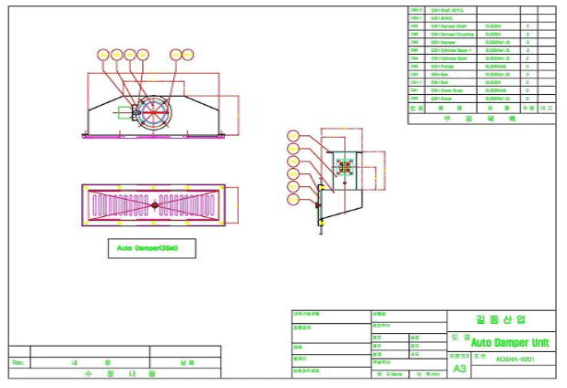
Refer to illustration of preparation of drawing list of machinery·apparatus
Appearance diagrams specifying appearance size and location of power switch, control button and lamp, etc., shall be prepared.
Clearly specify capacity, quantity, model No. and manufacturer in the specification of the parts.
Symbols, names, roles, scope of blockage and method of blockage in use shall be entered in.
| Order | Symbol(Note) | Name | Role | Scope of Blockage | Method of Blockage |
|---|---|---|---|---|---|
| 1 | EMO | Emergency Stop S/W | Disconnects power to the equipment in the time of emergency | Main power cut | Hard-wire and PLC |
| 2 | L1 | Inspection Door S/W | Disconnects power to the driving part at the time of opening/closing door at the inspection area | Power cut to X, Y Axis Motor | Hard-wire and PLC |
| ---The rest is omitted--- |
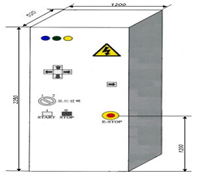
Instructions
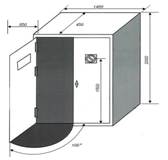
Instructions

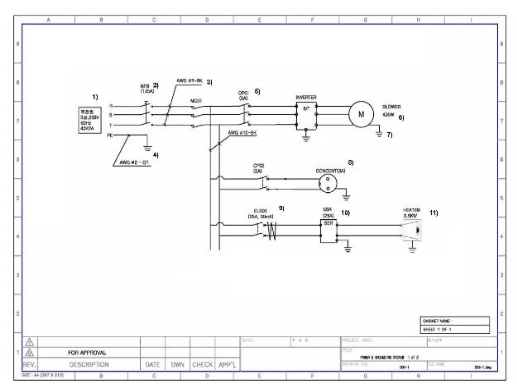
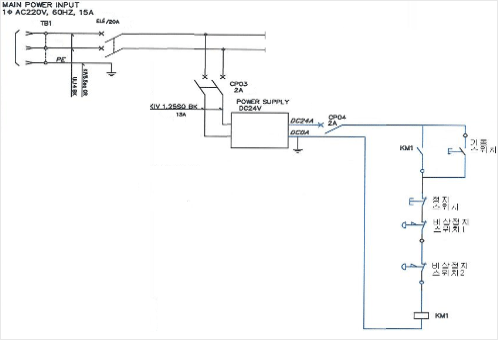
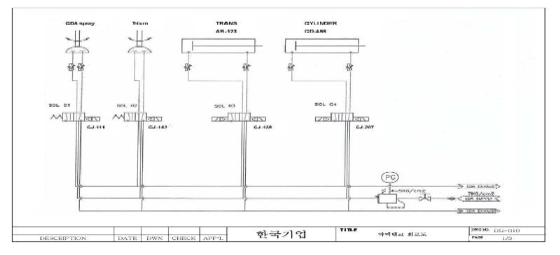
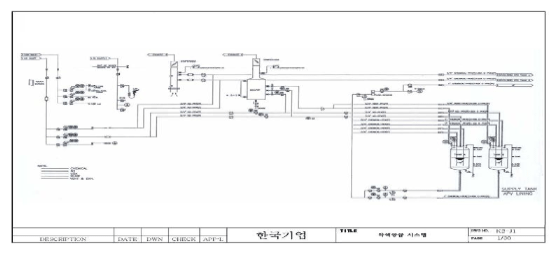
User Manual, Safety Marks and Instructions should be prepared in Korean
Please refer to "Attachment 1. Assessment criteria on the user manual under Safety Certification Regulation" for detailed preparation method.Explanation on the name plates and safety marks, etc.
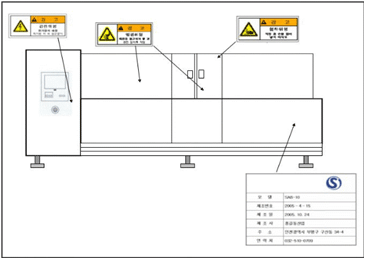
The followings are the major issues to be included in the explanation on Operation and Control
The following are major issues to be included in the maintenance explanation.
The following are major issues to be included in the explanation on transportation and installation.
Ex.) Enter location, height and place of the emergency stop button, control box and touch screen.Workability, accessibility, handling of heavy loads and identifiability, etc., shall be considered.
Refer to the Common Technical Standard S2-M-3-2009(3) concerning machinery and apparatus for calculation method.
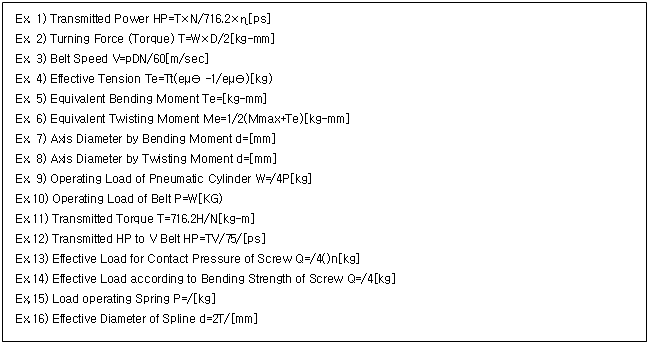
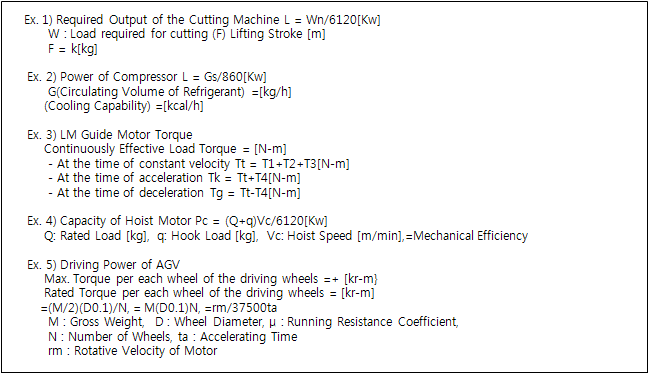
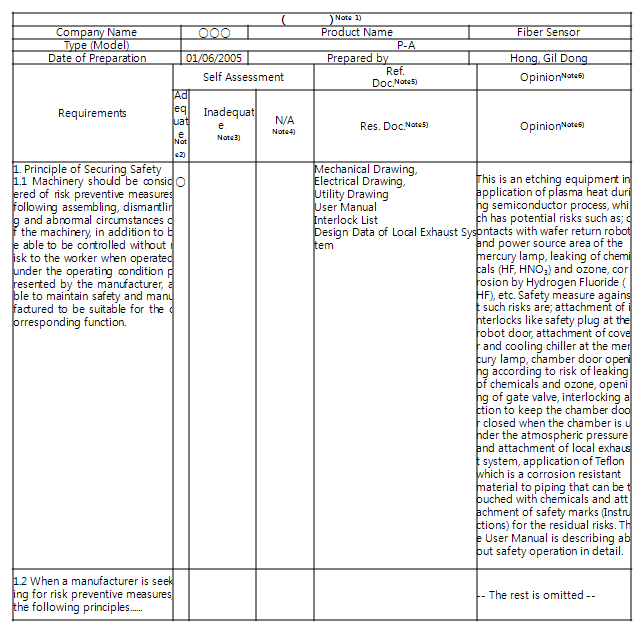
A. Cover

A-1. Test Result (Insulation Resistance)
| Insulation Resistance Test Result Sheet | ||||||
|---|---|---|---|---|---|---|
| Object of Measurement | Tested Spec. | Test Result | ||||
| Measuring Point Data | RV[V] | Wire-Wire/Wire-Earth | Test Voltage[V] | Measured Value[MΩ] | Reference Value[MΩ] | Adequate/Inadequate |
A-2. Test Result (Withholding Voltage)
| Withholding Current Test Result Sheet | ||||||
|---|---|---|---|---|---|---|
| Object of Measurement | Tested Spec. | Test Result | ||||
| Measuring Point Data | RV[V] | Wire-Wire/Wire-Earth | Test Voltage[V] | Measured Value[㎖] | Reference Value[㎖] | Adequate/Inadequate |
A-3. Test Result (Earth Continuity)
| Earth Continuity Test Result Sheet | ||||||
|---|---|---|---|---|---|---|
| Object of Measurement | Tested Spec. | Test Result | ||||
| Measuring Point Data | Cross-section of Earth | Test Voltage[V] | Test Current[A] | Measured Value[Ω] | Reference Value[Ω] | Adequate/Inadequate |
A-4. Test Result (Noise)
| Noise Test Result Sheet | |||||
|---|---|---|---|---|---|
| Measuring Point Data | Measuring Condition | Tolerance | Measured Value [DB(A)] | Adequate/Inadequate | |
| Primary | Secondary | ||||
| Front of M/C | M/C Paused | Shall be lower by 10dB(A) then the measured value when in 'standby' | |||
| M/C Full Load | Less than 85dB(A) | ||||
| Right of M/C | M/C Paused | ||||
| M/C Full Paused | Less than 85dB(A) | ||||
| Rear of M/C | M/C Paused | ||||
| M/C Full Paused | Less than 85dB(A) | ||||
| Left of M/C | M/C Paused | ||||
| M/C Full Load | Less than 85dB(A) | ||||
A-5. Test Result (Temperature)
| Earth Continuity Test Result Sheet | ||||||||
|---|---|---|---|---|---|---|---|---|
| Order | Measuring Point Data | After 1 Hour(℃)Note1) | After 4 Hours(℃) | After 8 Hours(℃) | Adequate/Inadequate | |||
| Surrounding Temp. | Measured Temp. | Surrounding Temp. | Measured Temp. | Surrounding Temp. | Measured Temp. | |||
| Average | ||||||||
| Max.Value | ||||||||
· Download Check List file